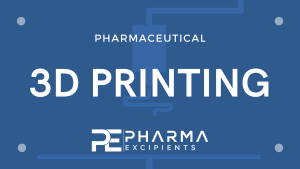3D printing of biologics—what has been accomplished to date?

Abstract
Three-dimensional (3D) printing is a promising approach for the stabilization and delivery of non-living biologics. This versatile tool builds complex structures and customized resolutions, and has significant potential in various industries, especially pharmaceutics. Biologics have become increasingly prevalent in the field of medicine due to their diverse applications and benefits. Stability is the main attribute that must be achieved during the development of biologic formulations. 3D printing could help to stabilize biologics by entrapment, support binding, or crosslinking. Furthermore, gene fragments could be transited into cells during co-printing, when the pores on the membrane are enlarged. This review provides: (i) an introduction to 3D printing technologies and biologics, covering genetic elements, therapeutic proteins, antibodies, and bacteriophages; (ii) an overview of the applications of 3D printing of biologics, including regenerative medicine, gene therapy, and personalized treatments; (iii) information on how 3D printing could help to stabilize and deliver biologics; and (iv) discussion on regulations, challenges, and future directions, including microneedle vaccines, novel 3D printing technologies and artificial-intelligence-facilitated research and product development. Overall, the 3D printing of biologics holds great promise for enhancing human health by providing extended longevity and enhanced quality of life, making it an exciting area in the rapidly evolving field of biomedicine.
Introduction
Three-dimensional (3D) printing technology or additive manufacturing has received extensive attention and has developed rapidly in the past few decades. It enables the manufacturing of more complex and customized designs, and has had a revolutionary impact in many sectors including food, fashion, architecture, transportation, medicine and healthcare, firearms, and the manufacture of circuits. For example, 3D printing has allowed the creation of intricate and personalized medical implants, the production of surgical guides, and even organ transplants.1 In addition, in the field of personalized medicine, 3D printed drug delivery platforms have the potential to revolutionize treatment by allowing tailored and precise drug administration.2 The market for 3D printing has been growing steadily, reaching US$ 16.75 billion worldwide in 2022, and this market is projected to continue to expand at a compound annual growth rate (CAGR) of 23.3 % from 2023 to 2030 (Table 1).[3], [4] This remarkable growth reflects the increasing adoption of 3D printing technology in various sectors and the recognition of its capabilities.
To understand the origins of 3D printing, we can trace its roots back to the 1960s, when many scientists and researchers first delved into this area and made significant progress. In the 1980s, pioneers such as Charles W. Hull patented stereolithography (SLA) technology, which allowed for the layer-by-layer curing of photosensitive resin to build 3D objects.5 The introduction of SLA technology paved the way for the commercialization of 3D printing, with the creation of the first commercial 3D printer, the ‘SLA-1’, by 3D Systems, Inc, a company co-founded by Hull. Meanwhile, Carl R. Deckard and Joseph Beaman’s selective laser sintering (SLS) technology, which utilized lasers to sinter powders and create 3D objects, also marked a significant advancement in the field of 3D printing.[6], [7], [8] These breakthroughs formed the foundation of what we recognize as modern 3D printing technology. Continuing the wave of innovation, S. Scott Crump invented fused deposition modeling (FDM) and co-founded Stratasys, Ltd. in 1989.9 FDM, which involves melting and extruding thermoplastic materials to build 3D objects layer-by-layer, opened up new possibilities for manufacturing.
These key contributions, along with others by various researchers, have led to the development of seven categories of 3D printing technologies, including: (i) vat photopolymerization (SLA–digital light processing [DLP]); (ii) material jetting (continuous or drop-on-demand [DoD] ink-jetting); (iii) binder jetting; (iv) material extrusion (FDM or fused filament fabrication [FFF], pneumatic printing, semi-solid extrusion [SSE], or direct ink writing [DIW]); (v) powder bed fusion (SLS, direct metal laser sintering [DMLS], selective heat sintering [SHS], selective laser melting [SLM], or electron beam melting [EBM]); (vi) sheet lamination (laminated object manufacturing [LOM] or ultrasonic consolidation [UC]); and (vii) direct energy deposition (laser metal deposition [LMD]).[10], [11]
Within the medical field, the applications of 3D printing are vast and promising. High-throughput drug screening, personalized drug delivery platforms, medical implants, surgical guides, organ transplants, and cancer research are some of the areas that have seen remarkable advancements with the use of 3D printing.[1], [11], [12], [13], [14], [15], [16], [17], [18], [19], [20] In particular, 3D bioprinting, a subfield of 3D printing, enables the creation of complex and functional living tissues and organs by layering biological materials, biochemicals, and living cells.21 This groundbreaking technology has the potential to revolutionize organ transplantation and personalized medicine. The global market size for 3D bioprinting is projected to reach US$ 5.3 billion in 2030, with a compound annual growth rate of 15.8 % (Table 1).22
Understanding the distinction between 3D bioprinting and 3D printing of biologics is crucial. Both involve the use of 3D printing technology and biologic materials, but 3D bioprinting focuses on the creation of living tissues and organs, whereas 3D printing of biologics involves the manufacturing of non-living biologic materials. This review primarily examines the development of 3D printing for the delivery of non-living biologics, such as gene therapies, recombinant therapeutic proteins, peptides, and antibodies, and for other applications within the field of personalized medicine.23
Overall, 3D printing technology offers immense potential in various industries, particularly in personalized medicine. The ongoing advancements in 3D printing have enabled the creation of complex designs, customization, and precise manufacturing, leading to new possibilities in healthcare and other sectors. In the following sections of this review, we delve into the specific applications of and advancements in 3D printing for non-living biologic delivery, and explore the exciting future that this technology has in personalized medicine (Figure 1, Figure 2).
Peptides and proteins play an essential role in the human body. Peptide or protein drugs are high affinity, high potency, and target-specific therapeutics that have a wide range of effects on the human body.24 In therapeutics, peptides usually act as growth factors, hormones, or neurotransmitters.25 Leader et al.26 classified protein therapeutics into four groups: (i) those that replace unfunctional proteins, augment existing pathways or provide novel functions; (ii) those that deliver new chemicals or proteins to targets, or that communicate with or regulate molecule or organisms; (iii) vaccines and (iv) diagnostic tools.26
In the first group, protein therapeutics, which include the insulin family, growth factors, and interferons, are crucial in treating various medical conditions, from endocrine disorders to metabolic enzyme deficiencies, hemostasis and thrombosis, immunodeficiencies, and fertility issues. These proteins also play vital roles in immunoregulation, growth regulation, and the enzymatic degradation of macromolecules and small-molecule metabolites. Owing to their ability to target and interact with specific molecules in the body, protein therapeutics are essential in modern medicine for treating various debilitating diseases and conditions.
Proteins in the second group are typically monoclonal antibodies (mAbs), which have shown promising results in treating different medical conditions, such as cancer, pulmonary disorders, and infectious diseases. They have also been used in immunoregulation and transplantation and have shown potential in the treatment of hemostasis and thrombosis. By selectively targeting and binding to specific molecules in the body, mAbs are powerful tools in modern medicine, offering a high degree of specificity and minimal side effects when compared to traditional chemotherapy or radiation treatments. As a result, mAbs have revolutionized how we approach the treatment of many diseases and have increased the overall efficacy and quality of care for patients.
In the third group, proteins such as hepatitis B and HPV vaccines stimulate the body’s immune system to generate protection against infectious diseases or toxins. Specific proteins that are contained in these vaccines mimic a harmful virus or bacteria, and they trigger the body’s immune system to produce antibodies to fight against the actual disease-causing agents.
Proteins classified in the fourth group are purified and recombinant proteins that are widely used for medical diagnostics, both in vivo and in vitro. These proteins are indispensable tools in the decision-making process that precedes the treatment and management of many diseases. For instance, diagnostic proteins are used to detect various cancers, such as prostate, colon, ovarian, and breast cancer. They are also used for the diagnosis and staging of small-cell lung cancer. These proteins allow medical professionals to accurately identify and monitor the progression of diseases, thereby helping them to make better-informed decisions about the most appropriate course of treatment and disease management.
Overall, proteins from each of these four groups can have significant impacts on the regulation of metabolic and immune processes in the human body, and their use in medicine has led to improved treatment outcomes and an overall enhancement of public health.26 Scientists have been studying the delivery of protein drugs for a long time, and have identified many problems or dilemmas in this field, including stability, immunogenicity, safety, and efficacy. Emerging 3D printing technology offers new possibilities for the delivery of protein drugs in a way that will allow precise spatial control of complex structures (Table 2).[27], [28], [29], [30], [31], [32], [33], [34], [35], [36], [37], [38], [39], [40], [41], [42], [43], [44], [45], [46], [47], [48], [49], [50], [51], [52], [53], [54], [55], [56], [57], [58], [59], [60], [61], [62], [63], [64], [65], [66], [67], [68], [69], [70], [71], [72], [73], [74], [75], [76], [77], [78], [79], [80], [81], [82], [83], [84], [85], [86], [87], [88]
Read more here
Anqi Lu, Robert O. Williams, Mohammed Maniruzzaman, 3D printing of biologics—what has been accomplished to date?, Drug Discovery Today, 2023, 103823, ISSN 1359-6446, https://doi.org/10.1016/j.drudis.2023.103823.
Read more on Overview of Pharmaceutical 3D printing here:


